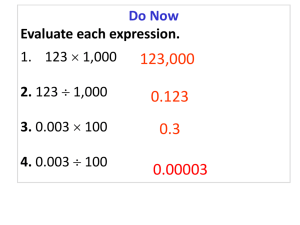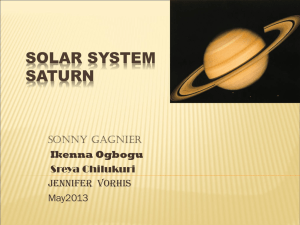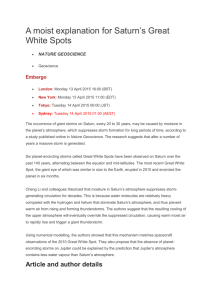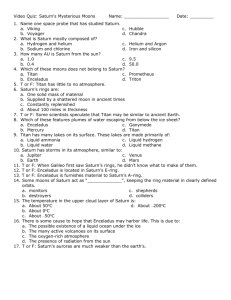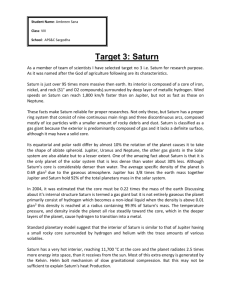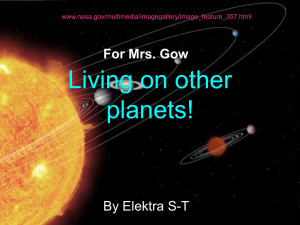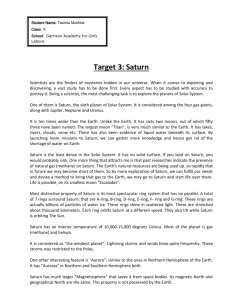The Planet Saturn
advertisement
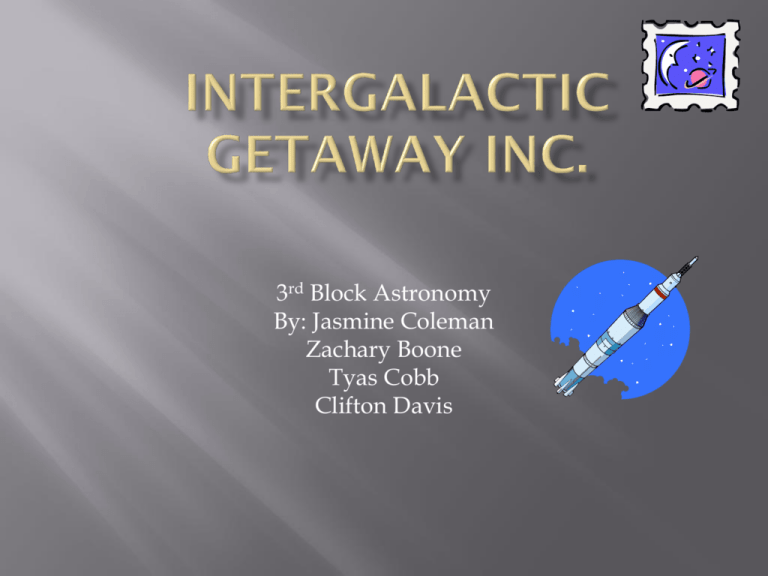
3rd Block Astronomy By: Jasmine Coleman Zachary Boone Tyas Cobb Clifton Davis Have you ever wanted to visit Saturn? Ever wondered what its like there? Saturn is the second largest planet; behind Jupiter who holds the spot for ‘largest planet in the solar system.’ The name Saturn comes from the Roman god of Agriculture. Although Saturn looks to be solid, it is actually a giant ball of gas. It’s core is solid though. Saturn’s Density is approximately 687.00kgm/m3. It has the lowest density of all other planets. Less dense than water. So dense it would float if it were small enough to fit in a tub Saturn has 95 times the mass of Earth. Earth’s diameter is about nine times less than Saturn. Saturn’s color changes from time to time. It appears to be orange, green and even blue sometimes. Saturn spins pretty fast on its axis. A day on Saturn is only 10 hours and 14 minutes! Saturn is mostly made of Helium( 25%), and Hydrogen(75%). Saturn is 1,400,000,000 km away from the sun. It takes exactly 29 Earth years for Saturn to orbit around the sun! From the planet Earth, Saturn and its rings can be seen. Things on Earth, weigh 16 Ibs less than that on Saturn. Saturn has 30 satellites, But many are small and faint. It was first spotted by Voyager 1 and 2. Atmospheres featuresSaturn is surrounded by clouds. 1st layer (highest) the temp. can reach -250 degrees Celsius; this layer contains Ammonia ice clouds. 2nd layer this layer is made up of HydroSulfate clouds; the average temp. is -70 degrees Celsius. 3rd layer (lowest) is the freezing average (0 degrees Celsius) and is made of clouds of water vapor. On Saturn there is something nicknamed “Great White Spot.” The Atmosphere appears to have a pattern that looks like bands. The warmest spot on Saturn is the polar vortex, and no other planet appears to have any. The shape surrounding the North pole vortex is in the shape of a Hexagon. It is unverified why it’s that shape. Many Astronomers believe that the shape is caused by a standing wave pattern, but most believe it’s just a Novel Aurora. Saturn’s gravitational pull causes the huge strains and cracks on one of its many moons. The moon sprays icy jets like a geyser. Saturn’s importance is based on Astrology. It is associated with the block and confinement that we need to fulfill our full potential. Now that you've got all the info on our featured planet, you should be ready to think over your decision to travel to Saturn right? http://www.aerospaceguide.net/planetsaturn.ht ml http://planetfacts.org/planet-saturn-facts/ http://www.arcadiastreet.com/cgvistas/saturn_0 200.htm http://www.nasa.gov/audience/forstudents/k4/home/F_Saturn_Fun_Facts_K-4.html http://www.windows2universe.org/saturn/statis tics.html http://www.msnbc.msn.com/id/46838093/ns/te chnology_and_science-space/t/saturns-gravitywarps-icy-moons-erupting-jets/#.UFJtdbKPWVM
